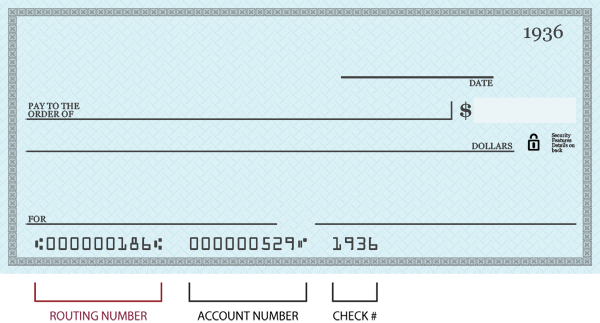Debt. A word that can quickly stir up negative feelings and anxiety for some people, yet others see it as an opportunity to reach their goals. It’s certainly true that debt can be a path to celebrating some of life’s big milestones such as pursuing a higher education, purchasing a dream home or starting a family. However, it’s important to understand that not all debt is created equal. And, if you want to know how to manage your debt or use it to improve your credit history, the first step is to understand the differences between good debt and bad debt.
Good Debt vs Bad Debt
To achieve some goals, the only way to get there is to borrow money. But whether or not the debt will be deemed “good” or “bad” depends on the loan type, the interest rate, what is being purchased as well as your personal financial habits and situation.
Let’s look at buying a house. It's a rare occasion when someone can simply write a check to purchase a home. According to National Association of REALTORS®, the national median home price in the U.S. was $284,600 in May 2020. So it is more typical for a home buyer to obtain a mortgage to buy real estate and pay for it over a specified number of years – 15 and 30 years are common terms. A loan that carries the potential to raise your net worth is considered good debt and a mortgage historically has been a safe way to take on debt while having the opportunity to build equity as you payoff the loan. The key to keeping your mortgage in the good debt category is to understand how much house you can afford and allowing room to make the payment if you experience any adverse financial events.
When it comes to borrowing money for a car, there are two schools of thought. Some consider an auto loan bad debt, because vehicles depreciate in value so the loan does not increase your financial position. On the flip side, others view it as good debt since a car offers mobility to get to or keep a job which increases your earning potential. In either case, buying or leasing a car is a big ticket item which many people fund with a loan. Traditionally, the average auto loan has been 36 to 60 months, but more often consumers are opting for six and seven year terms. These longer terms should be carefully considered. A lower payment spread over time may seem more affordable, but think about factors such as how much interest you will pay over that time and whether the warranty coverage ends before the loan is paid in full. If a loan is the only way you can buy a car, then take time to make sure the payment fits comfortably into your budget.
Student loans are generally considered good debt and that’s due to the reason that you are borrowing the money to boost your future employment opportunities. Most students who complete the Free Application for Federal Student Aid (FAFSA®) will qualify for a Federal student loan which doesn’t require a credit check. So this type of loan is a great way to establish your credit history. However, it’s important to balance the debt you take on to attend college or a trade school so that after graduation you can manage the monthly loan payments. Check out this article for tips to manage the financial responsibility of a college education.
That leaves us with credit cards—and these are a bit tricky! In a world where a credit card seems like a necessity, you might think they would be considered good debt, but most financial coaches label this kind of debt as bad. Nothing purchased with a credit card holds value so to borrow money for these types of items will not enhance your financial position. And, carrying large balances and only repaying the monthly minimum balance can be a slippery slope to financial hardship. However, when used properly and responsibly, credit cards can offer bonuses and savings through reward programs as well as a way to build or improve your credit score.

Building Credit History and Managing Your Debt
Whether it’s labeled good or bad debt, any of the methods listed above to borrow money are used to build your credit history. Your credit history is used by banks and credit card companies, but insurance companies, landlords and employers also use it to help them make important decisions about you. Here are a few general tips and guiding strategies to help ensure your credit history positively reflects your financial habits and creditworthiness:
Keep tabs on your credit score
Check in annually with one of the three credit reporting agencies: Equifax, Experian and TransUnion to review your credit history and get your score. Some banks can also provide your credit score. For instance, Lakeland Bank offers customers the ability to check their score daily using Credit Sense. Use these three tips to keep your credit score healthy:
- Pay bills on time
- Establish and maintain credit accounts for the long-term
- Sign up for credit monitoring alerts to protect your financial data
Take a close look at your budget
Before you apply for any kind of loan, it’s important to review your budget and spending habits. You want to make decisions to boost your financial position, not damage it so take time to review your personal expenses. Rent, cell phone, personal products, gas, car insurance, personal products, haircuts, dining out and other social entertainment – these can quickly add up. To make room for a new monthly payment, you may find it necessary to consider some changes such as downsizing your living arrangements, taking on a second job or even deciding what you can live without.
Reduce existing debt
If you are feeling the weight of too much debt, it may be time to create a plan to give you some breathing room. Use this Credit Card Repayment Calculator to figure out long it may take to pay off your credit card. Then to get started, review all the debt you have and choose a method to pay it down as quickly as you can. For example, you might use the snowball method. The goal of this repayment strategy is to pay off your smallest debt balance first. Do this by making the minimum payments on all of your debts, except put any extra money you can toward the balance of the smallest debt so you can pay it off faster. Once the smallest debt is paid off, dedicate the freed up money to the next smallest debt and so on—just like making a snowball. Another approach is the stacking method, which involves paying off higher interest rate loans before tackling those with lower interest rates.
No Pain, No Gain
It’s almost a guarantee that you will need to make some sacrifices along your financial journey, but the reward of your hard work can be realized with greater financial stability. Debt management isn’t easy, but a major step is to understand the role that both good and bad debt plays in determining your creditworthiness and overall financial health. Remember…you don’t need to be completely debt free to establish your creditworthiness; you just need to manage and take care of it responsibly.
It’s important to work with someone you trust and our team of experienced loan specialists and mortgage representatives are dedicated to finding a loan fits your needs. Contact us today or find a branch near you so we can help you with your financial journey.
You can also sign up to receive our monthly eNews to get our latest financial tips and promotions!


